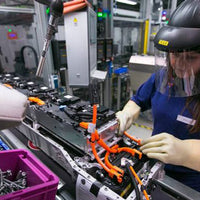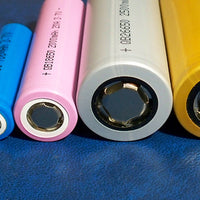Electrochemical energy storage is a new type of energy storage with the highest proportion of installed capacity.
The most abundant application scenarios and functions of energy storage types, the choice of battery technology route has experienced a confusing journey, from the early lead-acid (carbon) batteries, lithium iron phosphate, lithium ternary batteries, sodium-sulfur batteries, liquid flow batteries and other multi-test demonstration to the current lifepo4 has become dominant, but at the same time, lithium iron phosphate has not become the "ultimate answer", new battery technology route is still emerging or derivative, the exploration of battery technology route is continuing.
Before 2017, in addition to the commercial application of thermal power FM projects in a few regions such as Shanxi, the development of electrochemical energy storage, in general, belongs to the experimental demonstration stage, and the industry is in the stage of figuring out the characteristics of various types of energy storage batteries.
For example, in 2011, the State Grid Zhangbei scenic storage project, the selection of lithium iron phosphate batteries, lithium titanate batteries, full vanadium liquid flow batteries, lead carbon batteries, and other battery technology lines for demonstration and verification; 2011, the Shenzhen Baoqing energy storage power plant selected lithium titanate batteries, lithium iron phosphate batteries for demonstration and verification. Through the demonstration project to analyze and summarize the performance and operational characteristics of various types of batteries, the foundation for the commercial application of energy storage batteries has been laid.
At the same time, the rapid development of the electric vehicle industry, lithium iron phosphate, ternary lithium battery-based lithium batteries through scale and industrialization has brought about improved performance and rapid cost reduction, especially lithium iron phosphate, which has the advantages of high energy density, more charge and discharge times, high conversion efficiency, safety, etc.
At the same time, along with the advantages of industrialization, lithium iron phosphate battery cost is also falling rapidly, check the relevant data, lithium iron phosphate battery unit watt-hour cost from about 3.75 yuan / Wh in 2010 to about 0.7 yuan / Wh in the end of 2020, the exponential decline in price overlaid with its performance improvement makes lithium iron phosphate battery has the advantage of whole life cycle cost, and gradually become the dominant market choice.
According to the CESA Energy Storage Application Chapter released in the "2022 Energy Storage Industry Application Research Report" statistics show that in 2021, China's new electrochemical energy storage technology, lithium-ion battery energy storage technology installed capacity of 1830.9MW, power scale accounted for 99.3%; lead battery energy storage technology installed capacity of 2.2MW; liquid flow battery energy storage technology installed capacity of 10.0MW. Other electrochemical energy storage technology installed a scale of 1.52MW.
At the same time, although lithium iron phosphate batteries are relatively safe, but not safe, there have been several accidents in recent years, and the pursuit of safer batteries is always been the industry's goal.
In addition, in 2021, including lithium carbonate and other raw material prices soaring costs of energy storage power plant construction, the second half of last year, many energy storage projects into the wait-and-see phase, but also prompted the industry to turn their attention to other battery types.
For example, liquid flow batteries, lithium titanate batteries, sodium-ion batteries, etc., although other battery types in terms of technical maturity and cost from lithium iron phosphate still have a certain gap, with the development of technology and the soundness of the industry chain, will also gradually from the test demonstration to commercial applications.
The country and the industry have been promoting the diversified technical routes of energy storage, the National Development and Reform Commission, and the Energy Bureau issued the "guidance on accelerating the development of new energy storage" and the "fourteen five" new energy storage development implementation plan" and other documents are proposed to promote the diversified development of energy storage technology routes, energy storage as a technological innovation advantage of the strategic emerging industries with technological innovation advantages.
At present, new technical routes for energy storage batteries are emerging.
Aluminum ion batteries, solid-state lithium-ion batteries, metal-air batteries, lithium slurry batteries, and other technical routes are emerging like new shoots, and the diversification of technical routes can meet the needs of different application scenarios and functions.
In the project application, often faced with short or long-term energy storage, land resource scarcity or generous areas, natural environment differences, etc., diversified routes can adapt to different needs, for example, as new energy gradually becomes the main energy, long-term energy storage will become an indispensable element, and lithium iron phosphate is not quite suitable for long term energy storage needs, the need to develop more suitable types of energy storage.
With the continuous improvement in the level of energy storage battery technology, the market model is becoming increasingly mature, and with the rapid expansion of the application scale, energy storage technology to support the energy revolution has quietly come of age. Adhering to the diversified technical route of energy storage, the industry still needs to continue to put in efforts to develop high safety, low cost, high reliability, long life, and environmental protection energy storage batteries, to realize the reduction of system whole life cycle cost, and to help achieve the double carbon target through market verification of energy storage batteries adapted to the new power system.








0 comments